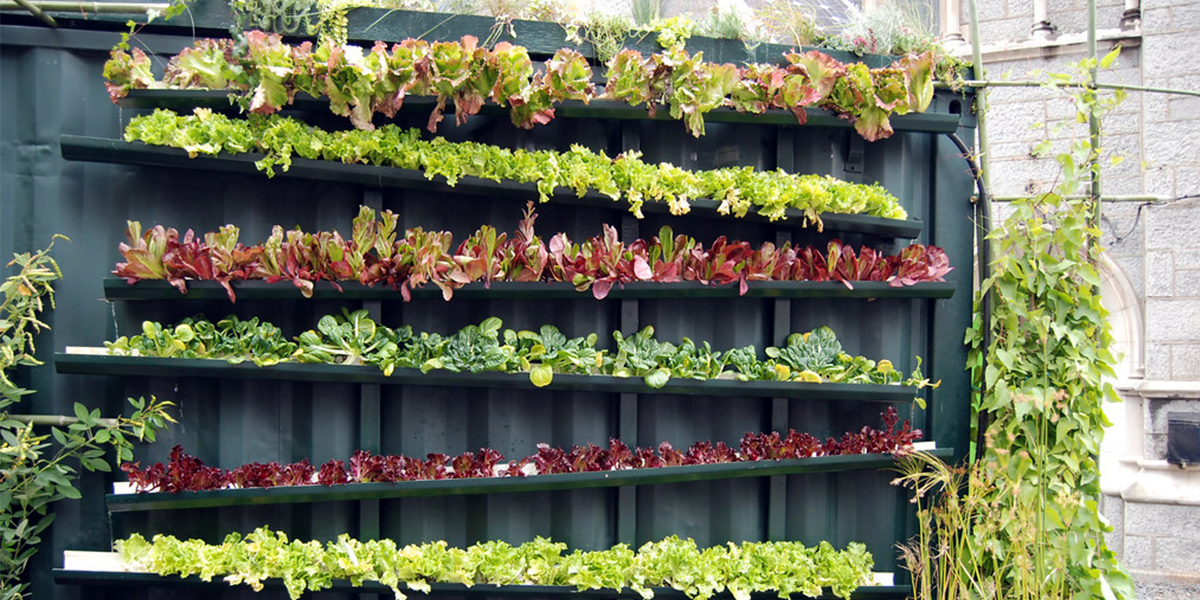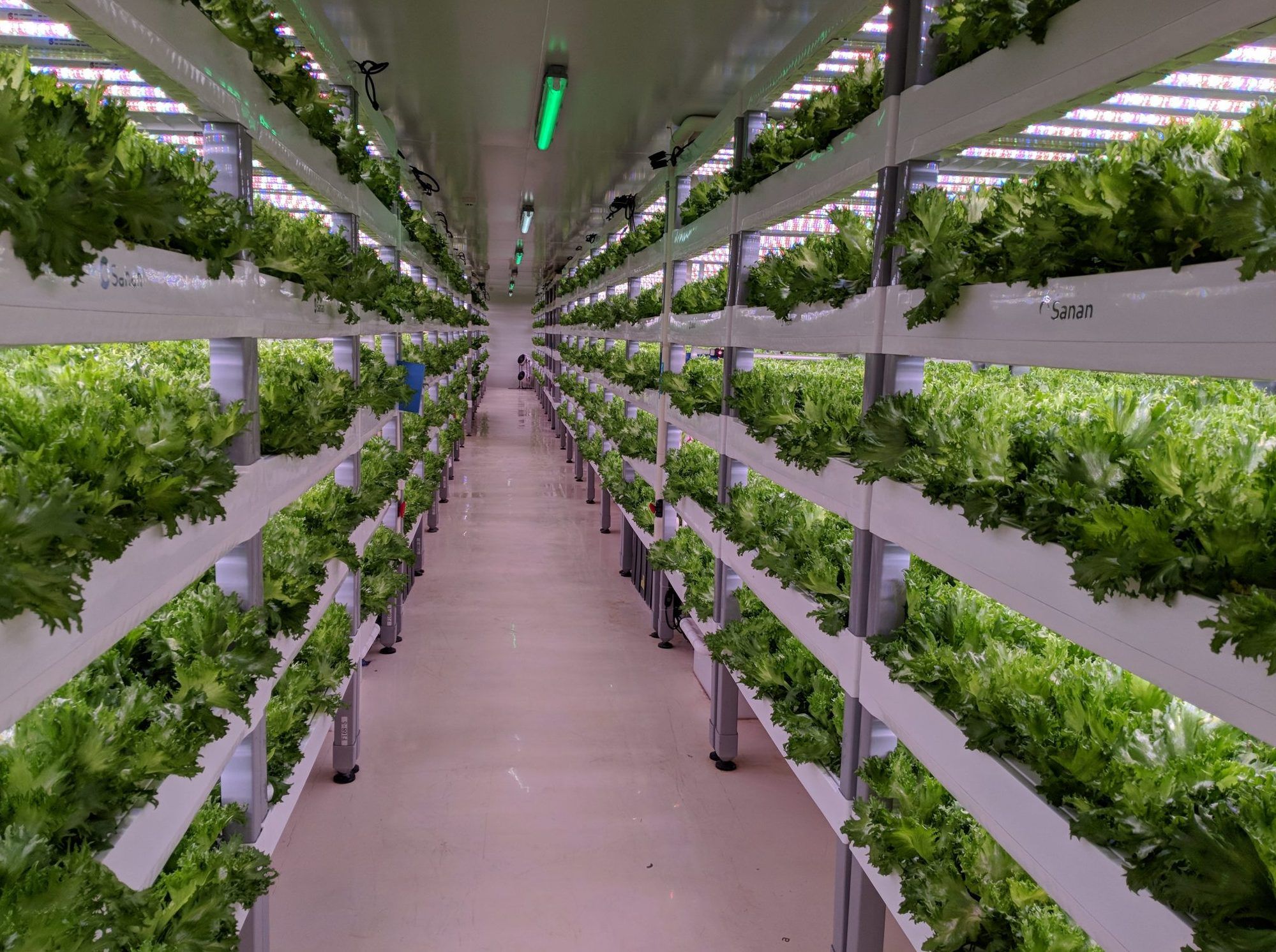how does indoor vertical farming work

Vertical farming is a revolutionary concept that could potentially solve the issue of overpopulation. As our planet’s population continues to grow, it’s becoming increasingly difficult to meet the demands of food production. With limited space for traditional farming techniques, vertical farming offers a space-efficient solution to provide the necessary crops for consumption in urban areas. In this post, we will delve into the world of vertical farming and explore its potential as a solution to the problem of overpopulation.
Abstract
Vertical farming is a modern method of farming that utilizes a controlled environment and artificial lighting to cultivate crops in a vertical space. This technique has gained significant traction as it offers many benefits compared to traditional farming methods. Vertical farming offers higher crop yields per square foot of land, reduced use of pesticides and fungicides, and reduced water usage. Furthermore, the controlled environment of vertical farming offers a year-round production of crops, making it a reliable source of fresh produce for urban areas.
Introduction
Overpopulation is one of the most pressing issues facing our planet today. As our planet’s population continues to grow at an alarming rate, it’s becoming increasingly difficult to meet the demands of food production. Traditional farming techniques require vast amounts of land, water, and resources to produce crops. However, with the limited land space available for traditional farming methods, it’s becoming increasingly challenging to meet the population’s food demand.
Vertical farming offers a possible solution to this problem. Vertical farming utilizes artificial lighting and a controlled environment to produce crops in a vertical space. This method of farming allows for higher crop yields per square foot of land, reduced use of pesticides and fungicides, and reduced water usage. The controlled environment of vertical farming also allows for year-round production of crops, making it a reliable food source for urban areas.
Content
How does Vertical Farming work?
Vertical farming relies on a controlled environment to produce crops in a vertical space. The controlled environment is created using artificial lighting, temperature control, humidity control, and nutrient supply. Vertical farming utilizes soil-free growing techniques such as hydroponics or aeroponics. Hydroponics is a soil-free growing technique that utilizes nutrient-rich water to provide the necessary nutrients to the plants. Aeroponics is a soil-free growing technique that utilizes a mist of nutrient-rich water to provide the necessary nutrients to the plants.
The controlled environment of vertical farming allows for the cultivation of crops in a precise and controlled manner. The lighting, temperature, humidity, and nutrient supply can be adjusted to meet the specific requirements of the crop being grown. This level of precision offers significant benefits such as increased crop yield and reduced use of pesticides and fungicides.
What are the benefits of Vertical Farming?
Vertical farming offers many benefits compared to traditional farming techniques. One of the most significant benefits is the higher crop yield per square foot of land. Vertical farming utilizes a stacked system to grow crops, which allows for the maximum use of space. Traditional farming techniques utilize a vast amount of land to produce the same amount of crops.
Vertical farming also offers reduced use of pesticides and fungicides. The controlled environment of vertical farming eliminates the need for pesticides and fungicides, as there are no pests or diseases to attack the crops. This results in crops that are free of harmful chemicals and safe for consumption.
Vertical farming also reduces water usage compared to traditional farming techniques. In traditional farming techniques, water is often wasted due to run-off or evaporation. Vertical farming utilizes a closed system that recirculates water, reducing the overall water usage. This is an important benefit, especially in areas with water scarcity.
The controlled environment of vertical farming also allows for year-round production of crops. Traditional farming techniques are often limited to the growing season, which limits the production of crops. Vertical farming allows for the year-round production of crops, making it a reliable source of fresh produce for urban areas.
Is Vertical Farming sustainable?
Vertical farming has the potential to be sustainable. It offers many benefits that traditional farming techniques do not, such as reduced water usage, reduced use of pesticides and fungicides, and the production of crops year-round. However, it’s essential to note that vertical farming relies on a tremendous amount of energy to operate.
The controlled environment of vertical farming requires a significant amount of energy to maintain. The artificial lighting, temperature control, and humidity control all require energy to operate. Furthermore, the production of the equipment necessary for vertical farming requires energy and resources, which could have a significant impact on the environment.
Vertical farming also requires a steady supply of nutrients to support the crops’ growth. The production of these nutrients could rely on non-renewable resources, which could have a significant impact on the environment.
What are the potential drawbacks of Vertical Farming?
There are several potential drawbacks of vertical farming. The first is the high energy consumption required to operate the controlled environment. The second is the reliance on non-renewable resources to produce the necessary nutrients for the crops. The third is the initial startup cost required to establish a vertical farm.
The high energy consumption required to operate the controlled environment of vertical farming could be a potential drawback. The energy required to maintain the artificial lighting, temperature, and humidity could result in a significant environmental impact. Furthermore, this high energy consumption could result in increased operating costs for vertical farmers.
The reliance on non-renewable resources to produce the necessary nutrients for the crops could also be a potential drawback. Many of the nutrients required to grow crops are derived from non-renewable resources such as oil. This reliance on non-renewable resources could have a significant environmental impact and could result in increased operating costs for vertical farmers.
The initial startup cost required to establish a vertical farm could also be a potential drawback. The equipment and infrastructure necessary to establish a vertical farm can be expensive, which could be a barrier to entry for many farmers.
Conclusion
Vertical farming offers a potential solution to the problem of overpopulation. It utilizes a controlled environment and artificial lighting to cultivate crops in a vertical space. This technique offers many benefits compared to traditional farming methods, such as higher crop yield, reduced use of pesticides and fungicides, and reduced water usage. Furthermore, the controlled environment of vertical farming allows for the year-round production of crops, making it a reliable source of fresh produce for urban areas. However, it’s essential to note that vertical farming relies on a significant amount of energy to operate, which could have a significant impact on the environment. Furthermore, the initial startup cost required to establish a vertical farm could be a potential barrier to entry for many farmers. Overall, vertical farming offers a promising solution to the problem of overpopulation and could have a significant impact on the future of food production.

References
- “Is Vertical Farming the answer to solving overpopulation?” Steemit, https://steemit.com/science/@alexpfeiffer/is-vertical-farming-the-answer-to-solving-overpopulation.
- “Vertical Farming Brings Locally-Grown Produce Into Urban Areas.” ReviewThis, https://www.reviewthis.com/gardening/vertical-farming-brings-locally-grown-produce-into-urban-areas/.
- “Does Vertical Farming Work?” Gardeners Corner, https://www.gardeners-corner.com/vertical-farming/.

Source image : www.gardeners-corner.com

Source image : www.pinterest.co.uk

Source image : www.reviewthis.com







